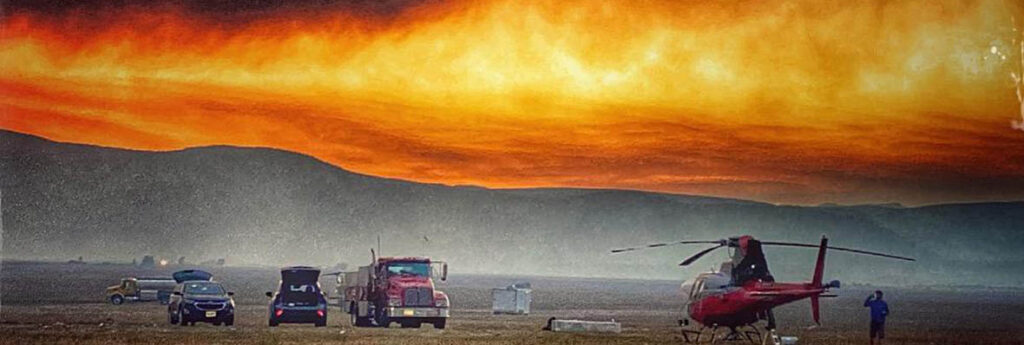A pair of Rocky Mountain wildfires flared again Monday in Wyoming and Colorado under dry, gusty winds, raising concern about embers blowing past areas where firefighters have made progress. Gusts could get strong enough to keep firefighting planes and helicopters from flying and dumping water at times when they’re needed most, they warned.
Firefighters on the Mullen Fire in southeastern Wyoming and northern Colorado and the Cameron Peak fire in northern Colorado expected gusts up to 35 mph (55 kph) after a breezy night sent flames past containment lines in a few isolated places.
“When we get those high winds and the aircraft can’t fly, that’s when we have the highest risk of spots and fire growth,” Mullen Fire information officer John Peterson said Monday.
Authorities reported no more structures burned in addition to the well over 100 mainly recreational cabins and other structures lost to both fires to date. Thick smoke from day to day has shifted between Laramie, Cheyenne, Fort Collins and other areas.
Firefighters at the Mullen Fire 100 miles (160 kilometres) west of Cheyenne worried that shifting winds could cause previously charred areas to burn together and put more cabins at risk in the Mountain Home area in Wyoming near the Colorado line, Peterson said.
They reported success keeping the fire mostly north of two northern Colorado state highways. A drone flown with an infrared camera at night has helped firefighters put out small fires caused by embers blown across the roads, Peterson said.
Firefighters last week took advantage of calmer weather to intentionally burn out timber and brush along the highways, creating wider barriers to the fire than the pavement alone.
The almost 240-square-mile (620-square-kilometre) fire was 14% contained, while the nearly 200-square-mile (510-square-kilometre) Cameron Peak Fire 20 miles (32 kilometres) west of Fort Collins, Colorado was 42% contained.
Wind was putting firefighters more on the defensive against the fire burning through the Cache la Poudre River drainage and other areas north of and partly inside Rocky Mountain National Park, Cameron Peak Fire operations trainee John Norton-Jensen said in a Monday briefing.
About 25 miles (40 kilometres) of mountainous forest with little human development separated the fires. Firefighters didn’t expect the fires to connect.
The fires were unusually intense for October, by which time cold temperatures and snow have usually brought fire season to an end.

